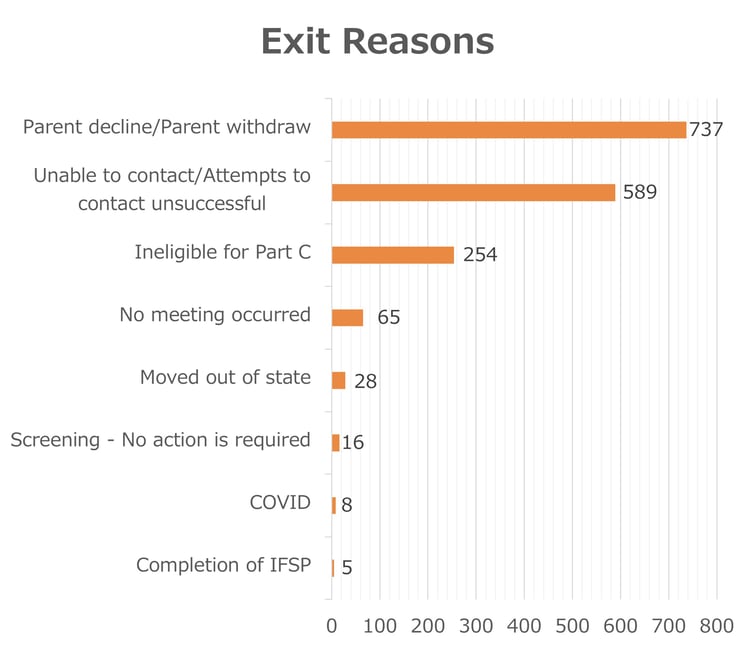Full-time Data Analytics Cohort 6 Analyzes Data for the Tennessee Early Intervention System
The primary goal for most students joining NSS’s Data Analytics Bootcamp is to obtain the technical skills required to work as a data analyst. During the bootcamp, students have the opportunity to learn tools used in data analysis through hands-on projects. At NSS, we aim for at least one project in each cohort to use real-world data so that graduates are more prepared for their first job in data analytics. Real-world data has nuances and issues that are difficult to replicate when designing a project from scratch. It is difficult to underestimate the learning that happens when these nuances and issues are encountered and solutions need to be created. If, in addition to the data being real, it comes from a source that is benefiting the most vulnerable in our community, it makes for an exciting and engaging project. The students of the Full-Time Data Analytics Cohort 6 (DDA6) were fortunate enough to work with such data when we recently partnered with the Tennessee Department of Intellectual and Developmental Disabilities (DIDD).
DIDD provides support to Tennesseans with intellectual and developmental disabilities by partnering with those individuals and their family members and friends. One program area DIDD supports is early intervention programs through the Tennessee Early Intervention System (TEIS) for children under the age of 3. DIDD is required by the Individuals with Disabilities Education Act (IDEA) to provide an annual report to the public about the performance of their TEIS programs that compares the results to the state's performance on indicator targets, such as length of time in the program and early exits. This reporting is done for any child enrolled in TEIS for at least six months. However, some children may leave and re-enter the program, sometimes several times, which makes getting the actual service time provided difficult to calculate.
Determining the length of enrollment in TEIS programs was the first task DDA6 tackled. Because entry and exit dates were embedded within other notes, it was difficult to automate the process. The students decided that they would start by examining the notes looking for patterns that would indicate notable dates. They then used RegEx, a library designed to match text patterns, to find and extract those dates in Python. This took some trial and error before a solution was found due to the unstructured nature of typed notes. However, once the solution was found, it was used to extract all relevant dates for all children across the data. The cohort was then able to calculate the total service time provided and the number of program exits.
Shannon Pargin, Strategic Planning Coordinator for Tennessee Early Intervention System (TEIS), shares, “this project answered a long-standing question for our team about how the calculation of days of service impacts our outcomes data. I was very surprised by the results but also encouraged because the results strongly supported a couple of other projects we are currently working on, such as revising our monitoring systems and a proposal for offering extended services through age four.”
The second question investigated by DDA6 was of potential patterns in exit reasons. The data provided by DIDD included anonymized demographic data for all children receiving services. This demographic data could be combined with the results of the program exit data to investigate several questions such as: What proportion of children exit the program before aging out at age 3? Are there any commonalities among children who exit the program while still eligible? Do patterns exist which may grant further insight?
The students of DDA6 used the Pandas library in Python to convert all the provided data into DataFrames. From there they were able to use the skills they recently learned to organize, categorize, and measure the provided attributes of the children and look for places where unexpected correlations occurred regarding exit data. These results were then packaged and presented to representatives of DIDD.
DDA6 discovered that some children withdrew from the program for reasons other than aging out (turning three), moving out of state, or being ineligible for services; which means that TEIS has the opportunity to work with families, referral sources, and providers to reduce early exits with a more informed approach.
 With these insights, TEIS identified ways to improve their data systems to make future analysis better and now can focus their attention in areas that will ensure children have access to the resources they provide. This was a win-win-win scenario. The students of DDA6 had valuable hands-on practice with a complex real-world dataset, TEIS received complex technical analysis to help them make better decisions regarding children exiting the program early, and the children of Tennessee will be more likely to receive the support they need.
With these insights, TEIS identified ways to improve their data systems to make future analysis better and now can focus their attention in areas that will ensure children have access to the resources they provide. This was a win-win-win scenario. The students of DDA6 had valuable hands-on practice with a complex real-world dataset, TEIS received complex technical analysis to help them make better decisions regarding children exiting the program early, and the children of Tennessee will be more likely to receive the support they need.
“It felt great to put our newly learned skills toward creating analysis which would help people in measurable ways,” stated DDA6 student Timothy Coca.
Data analytics is a career many choose because it is interesting, challenging, and in-demand. It is good to have a reminder that often, behind all the code and analysis, there are outcomes that can impact lives.







